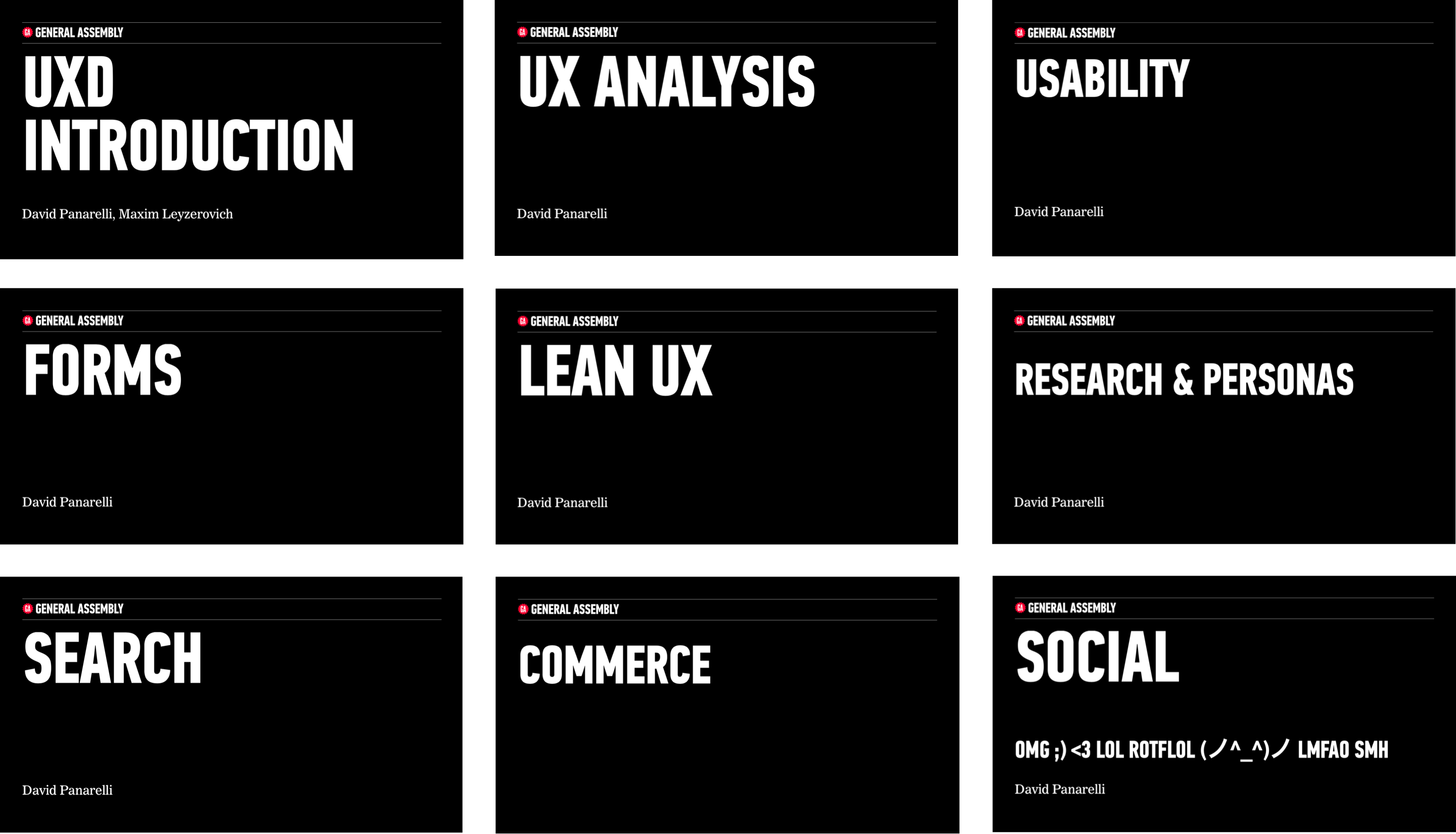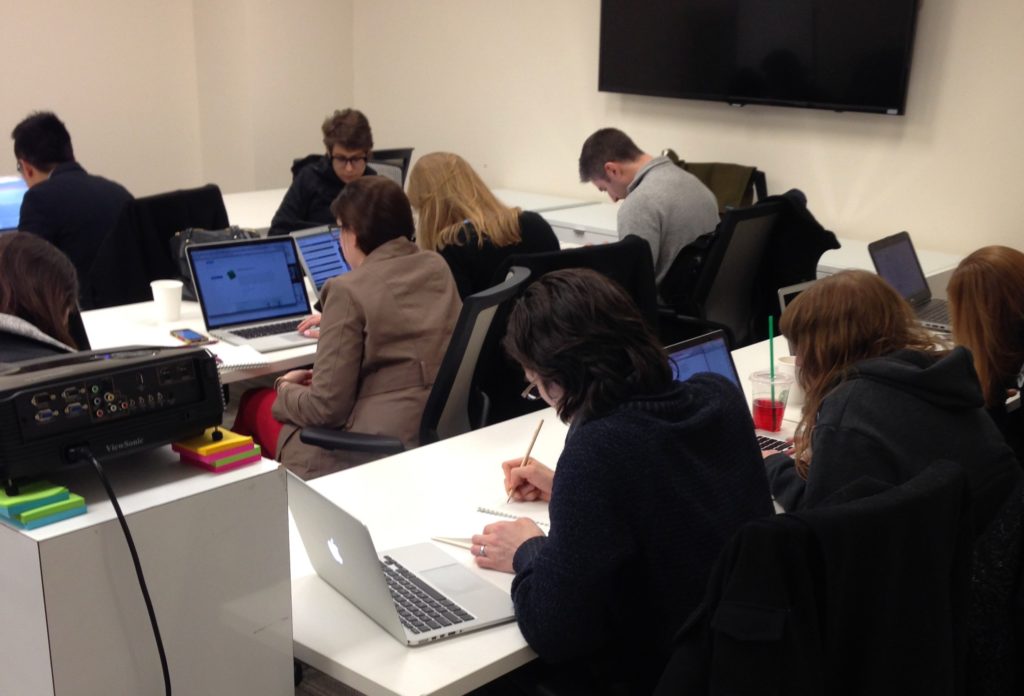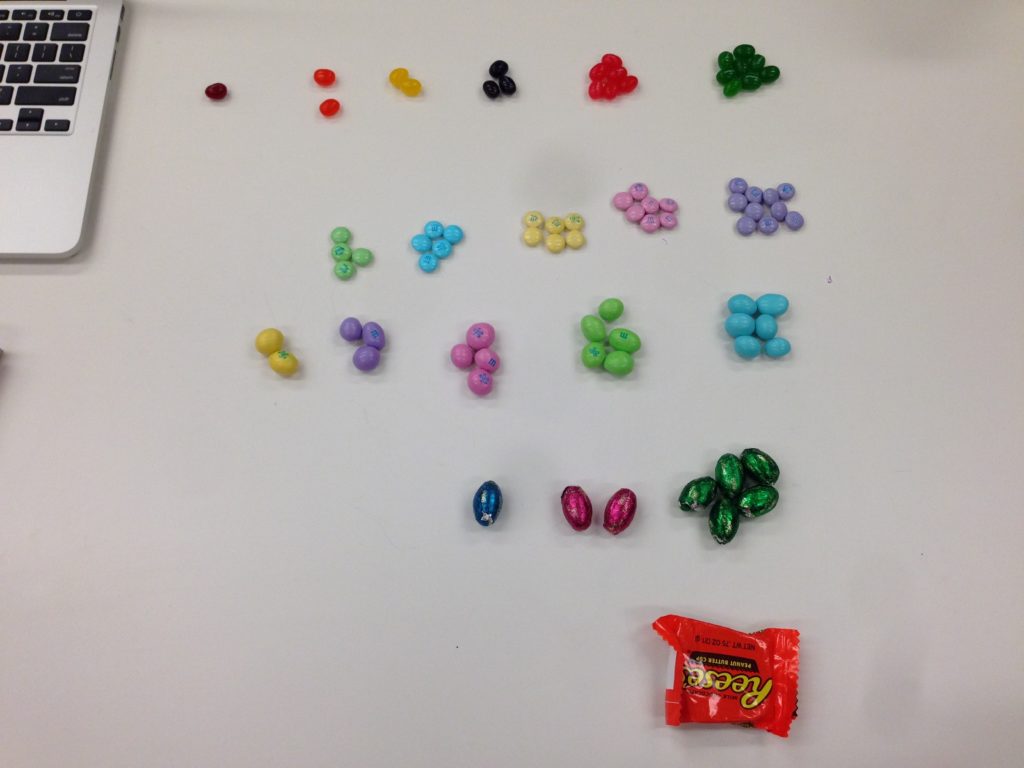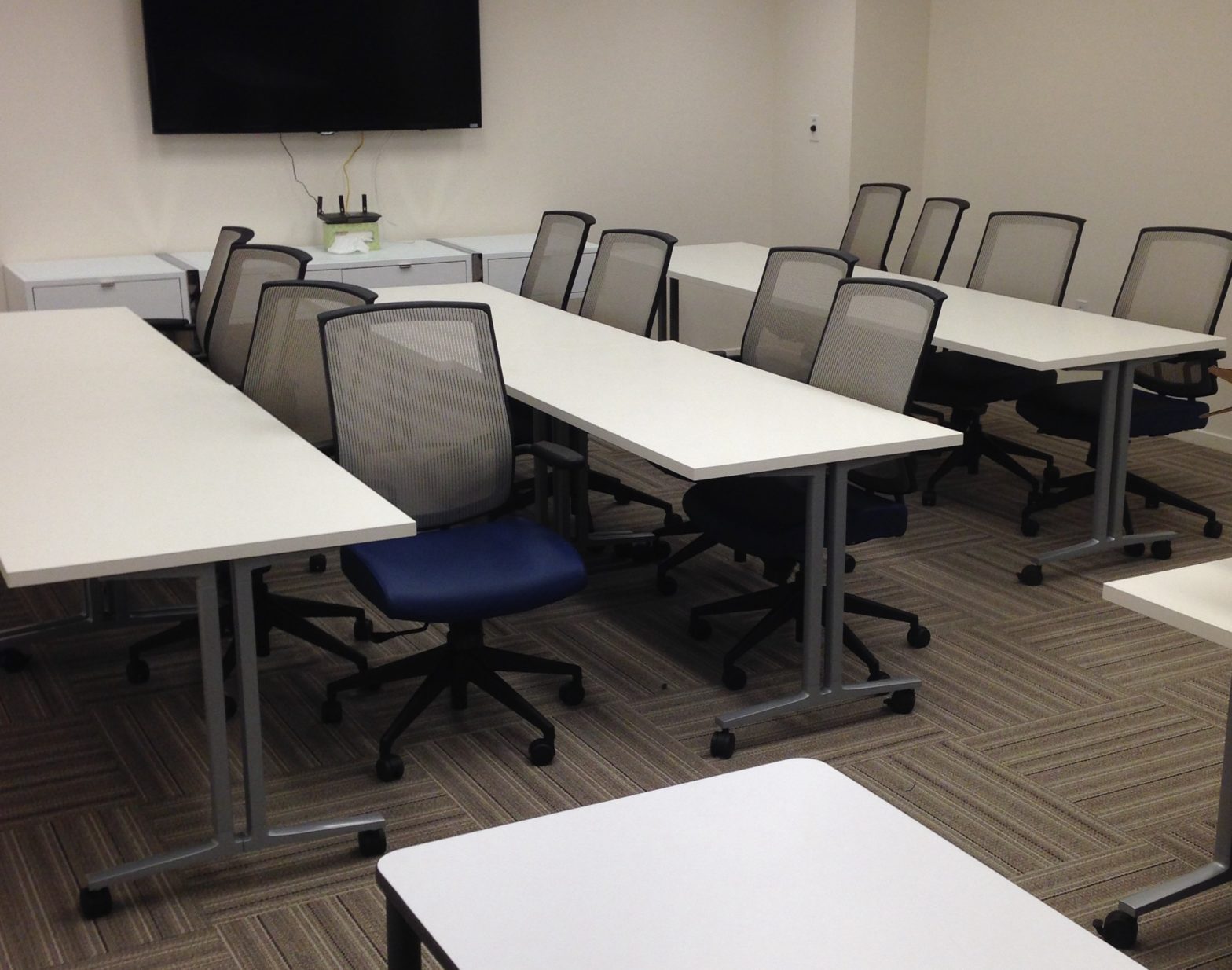Winter, 2014
Problem
I was approached by General Assembly to teach the first Introduction to UX Design class in their new DC office.
I would be teaching a group of 22 students a core curriculum provided by GA, using materials from past instructors as supplements. I had to ensure that I covered a wide and thorough foundation of UX theory and practice, while keeping it engaging and fun.
Solution
I wanted to make sure the students got a three key things out of this class:
- Hands-on familiarity with UX design methods
- Real-world validation of the UX practices we covered in class
- A robust understanding of possible UX career opportunities

While the class started out pretty smoothly, I became a little overwhelmed with my own drive to include as much information as possible in each class.

It was also challenging to make sure the classes had exercises that were engaging enough, not just lecture. We succeeded with sketching sessions (paper prototyping), candy sorting exercises (IA), and numerous group exercises.

I leaned heavily on the UX community in the DC area, bringing in as many different outside speakers as possible. The class enjoyed presentations and general hijinks from the likes of Dan Willis, Ahava Liebtag, Thomas Vander Wal, Pete Manning and Laura Hahn from Laundromat Design, Will Harding and Liz Odar from LivingSocial.
We also ventured out of the classroom for a field trip to the NPR offices, thanks to Liz Danzico and Scott Stroud. I wanted the class to get a sense of what role UX plays in NPR as an organization and what the day-to-day life of a UXer is. Scott rocked our world with a presentation and tour that not only answered those questions but showcased what a great team NPR has.
Finally, students were assigned a final project. I worked with the class over the duration of the course to develop their concepts and prototypes. I also put an emphasis on the presentation of the work and the importance of storytelling.
When the time came to present their final presentations, they exceeded everyone’s expectations–perhaps even their own. Student projects ranged from “the tinder for golf” to a platform for connecting people in need with opportunities for public housing. I was truly inspired by the students’ drive and ingenuity.
Students have since gone on to UX positions at Spotify, Amazon, and the Stanford dSchool, among others.
Takeaway
It was challenging to keep the classes engaging enough with in-class exercises and worth-while homework. However, reaction to the class was generally good. We struck a good balance of lecture, activities and visiting guests who provided critical validation and counterpoint.
Due to some bumps in the curriculum, I took on a new skill: conceiving, writing, producing, and delivering a presentation in 24 hours. I also had the opportunity to sharpen this skill during a family emergency that happened in the middle of the class, so there were additional demands to deal with.
I loved the mentoring aspect of teaching, and it was wonderful to see some of the students really discover UX design and run with it.
Team
- Instructor: David Panarelli
- Designer in Residence: Maxim Leyzerovich
- Course Producer: Pat DuPuyt
